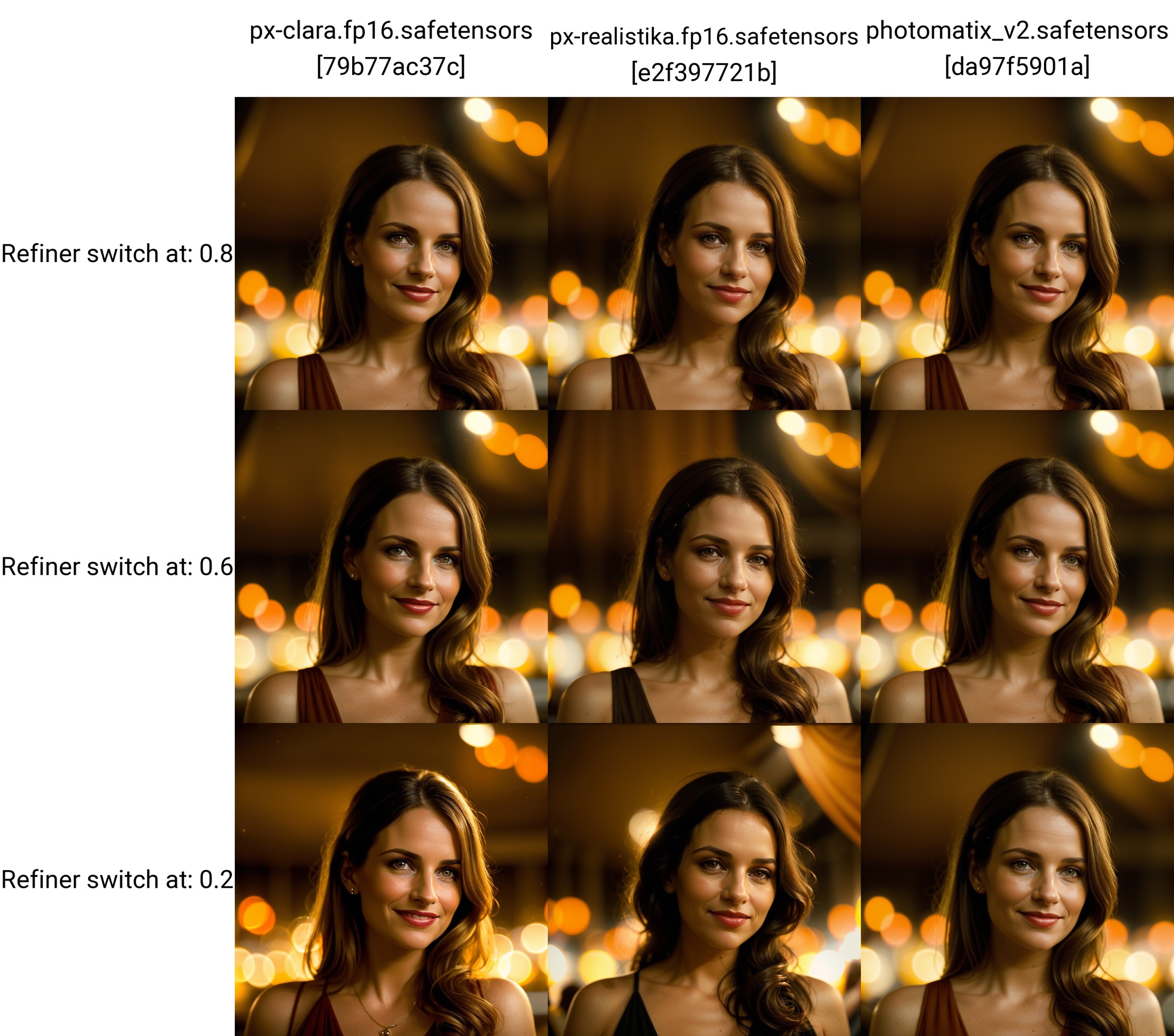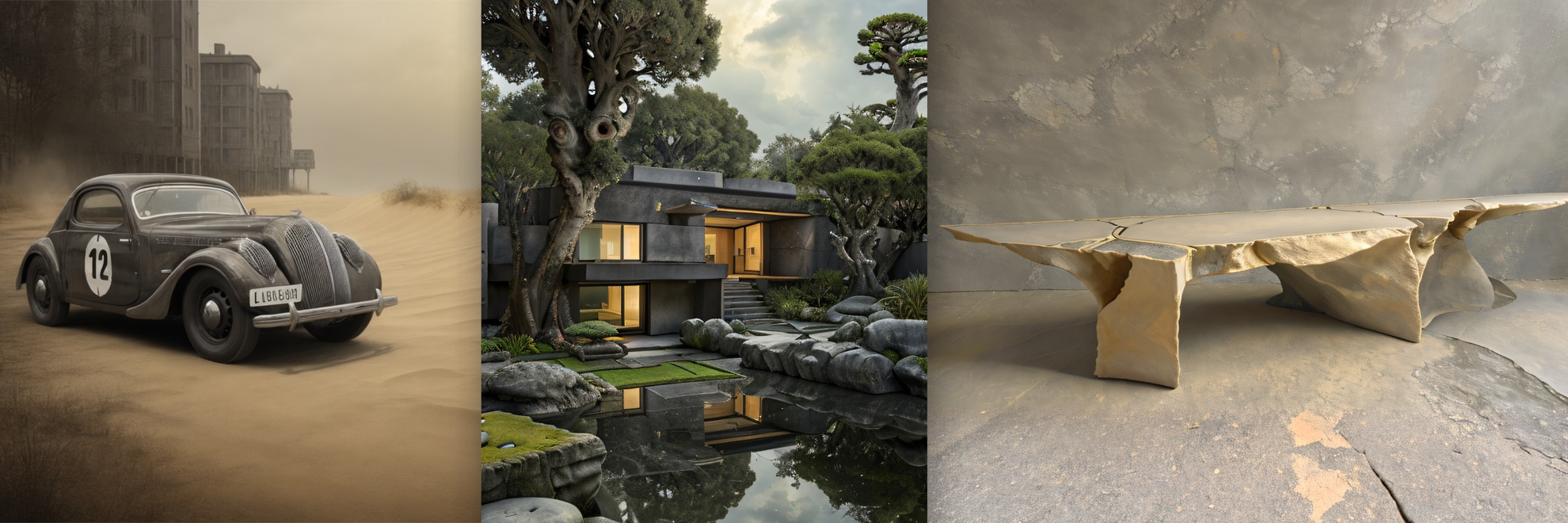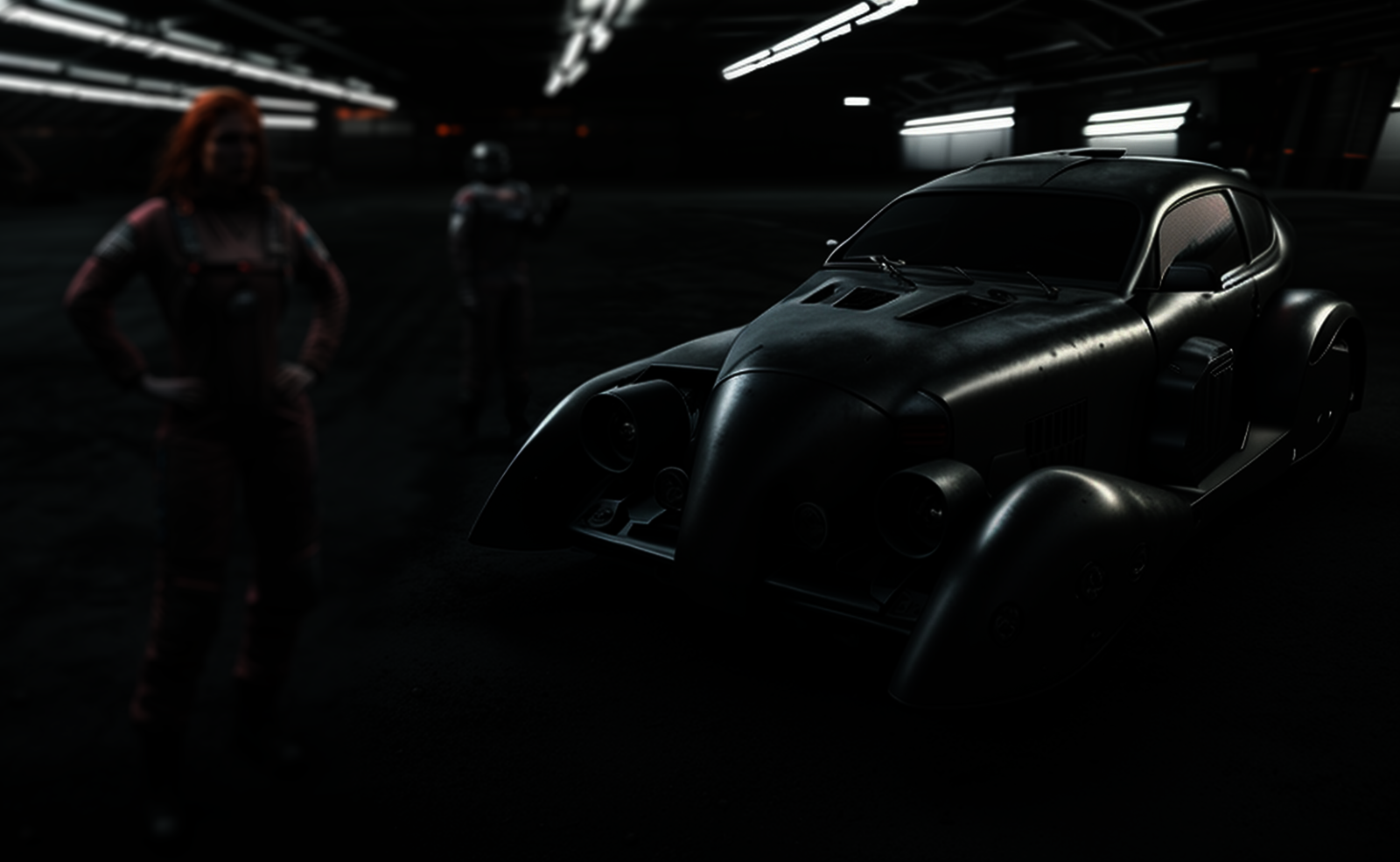Photomatix v2: Cinematic SDXL Styles and Refiner Tricks in SD 1.5 Model

Photomatix v2 is an update of the SD 1.5 model checkpoint, Photomatix. It is an experimental model merge aimed at achieving photorealism and cinematic outputs. It shares some advantages and limitations with the previous model. Photomatix v2 was fine-tuned through numerous iterations and model merges based on the target visual output. This article briefly describes some of the pros and cons, showcasing some tricks using SDXL workflows and prompting styles.
➜ Download the released model here.
Update: Experimental Latent Consistency LCM version is available for download.
Performance Across Resolutions and Setups
Photomatix v2 works best with standard SD 1.5 resolutions (512x512, 512x768, 768x768), but depending on the subject it excels in higher resolutions too (960x640, 1024x768, 768x896, 1024x1200).
In most cases, I do suggest the workflow described in the Photomatix article, which consists of rendering lower-resolution images first and then using upscaling and inpainting techniques (ADetailer) to finish it. This workflow allows the best flexibility and diversity of results.
Here are examples of upscaled images and images rendered directly into the final resolution.
Comparable Results to the Best Merged Models
I was going for a particular style when developing Photomatix v2. The goal was to create a model that would have good results with simpler prompting and yet work well with various styles applied at once. The idea was to create a lower resolution and less resource-hungry replacement for SDXL models.
Here are some examples of generic subjects and scenes I was using when testing the v2 model candidates:


Photomatix v2 often does not perform well when the subject is not aligned with frame axes, especially in landscape orientation; SD often struggles to recognize 3D context and foreshortening of perspective. Additionally, managing characters with objects and understanding the context of objects in the scene can result in a mixed up output. These issues are inherent in SD and AI models in general and are not unique to this particular merge. More issues can arise with higher resolutions and unusual image ratios without any form of controlling extension (ControlNet, Regional Prompter, etc.).
Photomatix v2: Refiner Models
You will achieve interesting results when using "refiner" versions of Photomatix v2. You may experiment with another model with distinct outputs, using it as a refiner (note that using Hires fix during txt2img pass eliminates the effect). The refiner models will be available after release of main models.

PX-Clara was originally tested as a brighter and more "overbaked" V2 base model for the experimental PhotomatixRT version. PX-Realistika adds some irregularities to the output (notice the details in hair and overall composition).

PX and SDXL Styles
Photomatix v2 works well with stylesets developed for SDXL models and former versions pf Photomatix and PhotomatixRT.
PX-Styles are experimental token combinations and styles developed when working with Photomatix base model and my other models and embeddings.

Versatility for Creative Expression
Photomatix v2 is not limited to photorealistic style only. Try the other styles and combinations from the style collection.
Suggested LoRAs and Embeddings
Generally any LoRA for SD 1.5 should work fine. I would like to recommend these mentioned in my recent SD articles, or you may see the list to start with on github with Photomatix utilities and resources.
For full prompts (and other examples of LoRAs and embeddings) check the Civitai gallery with Photomatix v2 model.
About Photomatix v2
Photomatix v2 is a base checkpoint model merge, created by block weighting merge of these models. Thanks to the authors for the countless hours of experiments working on these models (you may read creator names/nicknames on their profile pages links down below).
- Photomatix (Civitai link)
- Photon v1 (Civitai link)
- AbsoluteReality (Civitai link)
- epiCRealism (Civitai link) was also used to balance the refiner versions
- SD 1.5 base model (Hugging Face)
You may read "pedigree" of these base models on their respective pages.
Merging brings some benefits and also many issues.You may read about merging techniques in the following article (Merging Checkpoints: Blocks, Weights, and Base Models coming soon).
For Beginners with Stable Diffusion and A1111
If you are new to or just starting with Stable Diffusion and A1111, check out this article for basic installation and setup. General rules on how to work with SD 1.5 are described in the Stable Diffusion Photorealism Guide. For tips and tricks, explore the entire series of articles tagged under Stable Diffusion and AI.
Conclusion
Photomatix v2 is an experimental model I am using for my latent space manipulations and experiments. It delivers very nice results, particularly in color tonality and surface texture areas. However, it is not intended for professional online deployment, such as a public cloud model, because it has been modified for performance and artistic output without any form of censorship or family-friendliness.
In conclusion, Photomatix v2 expands the artistic possibilities of the Photomatix and PhotomatixRT models. It is possible to combine the effects, utilities, and styles developed for these models with outstanding results. Together with its refiner models, it is an interesting addition to any SD model toolkit.

Thanks
Finally, thanks to the Stable Diffusion, Hugging Face, Civitai, and A1111 communities and contributors for their hard work. Without the collective effort and resources of such projects, these tools would not be possible, and they would not be available to such a wide audience of creators.




